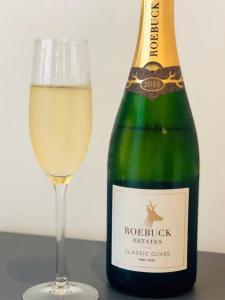-
中文名:
-
英文名:Sussex
-
位置:
-
葡萄园面积:公顷
-
葡萄酒特点:
-
产区产量:
-
土壤:
Sussex is a cool-climate region in the southeast of England, comprising two administrative counties, West and East Sussex. Its southern boundary is formed by the English Channel coast. It is a key zone for wine production in the UK and is the home of many of the country's award winning estates. Its sparkling wines made mainly from Chardonnay, Pinot Noir and Pinot Meunier are attracting favorable comparisons with Champagne.
An application for PDO status (equivalent to AOC/AOP in France) for traditional method and still wines was submitted in 2016. At the time of writing the implications of Brexit on UK PDOs for food and drink was unknown. As of 2018 Sussex Wine had temporary designated status in the UK. In addition to the three grapes mentioned above, the other Champagne varieties are allowed for sparkling wines. Permitted varieties for still wines include numerous German-developed crossings such as Dornfelder and Bacchus which have a longer history in the UK, plus more familiar varieties such as Riesling, Pinot Blanc and Pinot Gris. The latter are looking more viable for UK winemakers due to climate change.
East Sussex is also home to Plumpton College. Its Wine Centre boasts a full-scale wine estate and offers Batchelor's and Master's degrees in Viticulture and Oenology.
There are over 700 hectares of vineyards here. This represents the largest concentration of vines in the UK. They are planted on a wide variety of soils, including the free-draining chalk of the South Downs.
This escarpment stretches across most of Sussex, from the cliffs at Beachy Head in the east into Hampshire in the west. It is part of a wider chalk system which also includes Salisbury Plain, the Isle of Wight, and the North Downs. On the other side of the English Channel the chalk reappears in the Parisian basin where the Champagne vineyards are found. This shared soil type is often mentioned in references to sparkling wine from southern England.
This had led to considerable focus on chalky areas for recent investments, even if other climate-based factors differ from Champagne. And not all areas of the South Downs are optimal for winegrowing. Many chalk slopes are north facing. Others are elevated and/or exposed to strong maritime breezes which cause vines to struggle to ripen fruit.
The flatter area to the north, known as the Weald, is also home to some quality vineyards. Here the chalk layer has largely been eroded. Soil types are more likely to major on greensand – the next layer down – or clay. Wines from these areas may show a little more depth of fruit. Chalk-grown wines may show more perceivable (if not scientifically measurable) acidity on the palate.
Sussex is classified as having a maritime climate, and is one of the most sunny and warmest areas in England. Rainfall per annum is typically in the 650 to 850 range (25.5 to 33.5 inches). Projections regarding climate change have prompted optimistic suggestions that Sussex and neighboring areas may in a couple of decades supplant the ever-warming Champagne region as the world centre of sparkling wine. Nevertheless the climate throughout the south of England, remains marginal for still wine production, especially for red grape varieties.
Sussex has also been at the forefront of the UK "Gin Revolution". Some leading new-wave brands are distilled at the same estates where vines are grown. The area is also something of a center for brewing. There are around 65 breweries, microbreweries and brewpubs across East and West Sussex.


